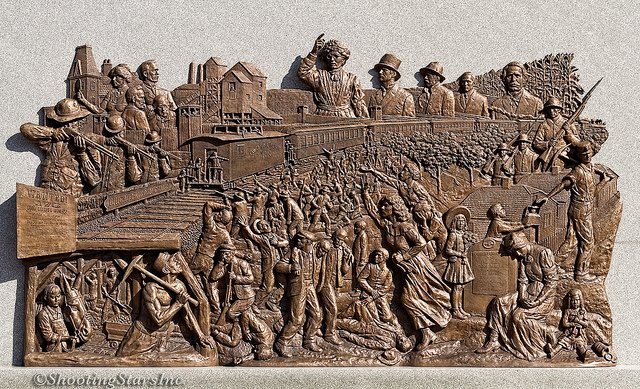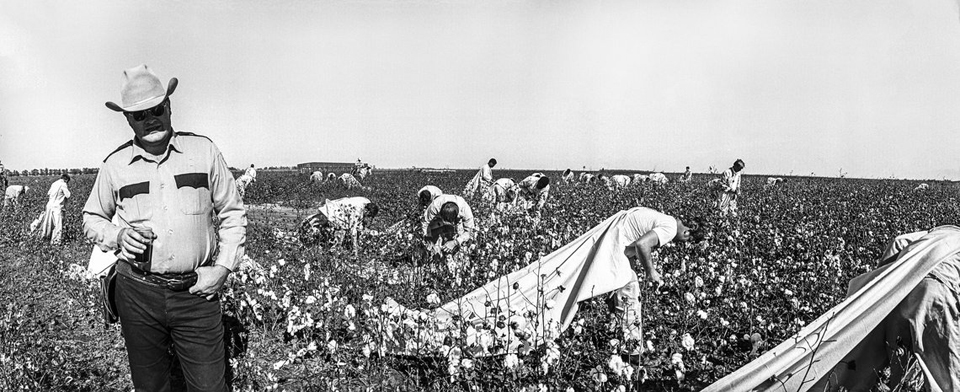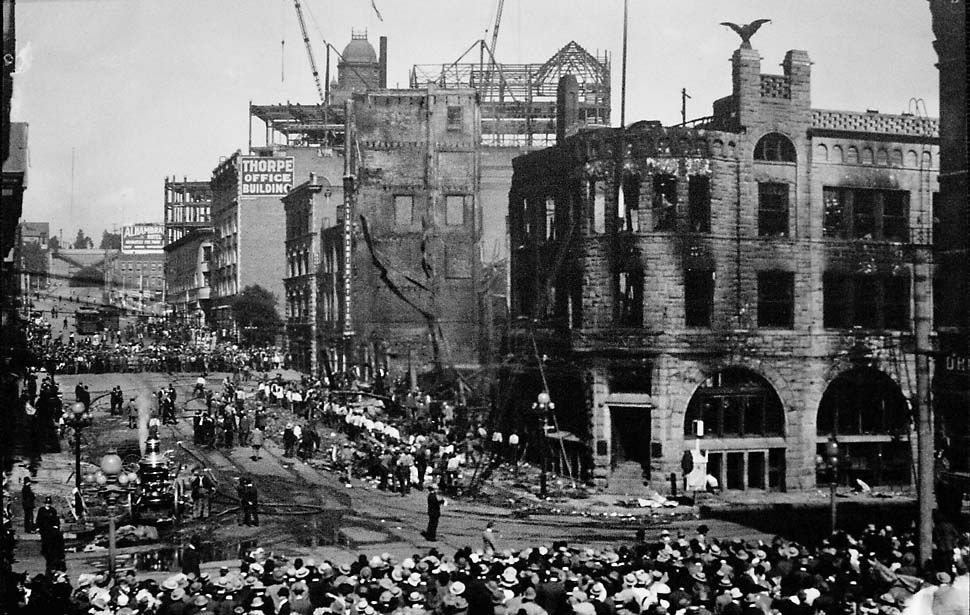
This Day in Labor History: October 11, 1979. OSHA fined American Cyanamid $10,000 for coercing women workers into sterilization if they wanted to work in jobs where they would be exposed to lead and chemicals! Let's talk gender discrimination and toxicity on the job! 

During the 1970s, two trends coincided that forced highly polluting dangerous industries onto the defensive. The first was the rise of environmentalism that included keeping workers healthy.
The creation of OSHA in 1971 was a key moment in this history, as the federal government now, at least in theory, took responsibility for making sure workers were safe from hazardous chemicals and other health risks on the job.
Second, the rise of feminism included women demanding that jobs previously considered exclusively male be desegregated so that women could work in them. In many cases, the male unionists were as outraged by this as the companies, but it slowly happened.
That many of these jobs were dangerous, and often unnecessarily so, contributed to the masculine identity of many union members. It also served the interests of the companies who did not want to invest in making the workplaces safer.
So it made sense for the companies to go after the women who wanted to work in these jobs. That most were young made their bodies a prime target of this employer attack strategy.
Thus, in 1975, Bunker Hill Mining Company in Kellogg, Idaho forced women to go through forced sterilization if they wanted to work in its smelter. This became a frequent demand by employers in dirty industries.
The American Cyanamid plant in Willow Island, West Virginia, on the Ohio River north of Parkersburg, made some nasty products using chemicals and dyes that led to lead exposure for workers.
With women forcing their way into these jobs in the 1970s, American Cyanamid defined a fetus as a child and thus banned pregnant women or women who might become pregnant.
A company executive stated, “We don’t allow children in the workplace and we shouldn’t allow a fetus in the workplace.” So the company pressured the women into sterilization. At least five agreed, all between the ages of 26 and 43.
At least two other women transferred out of the pigment division to lower-paying work. The company told the women they could transfer to the janitorial department, but there were no jobs in that department and employment was based on seniority anyway.
One woman told the employer her husband had a vasectomy, another, age 43, was willing to sign a waiver. The company refused to compromise with either worker.
Barbara Cantwell, who did get sterilized, said “I wish now I’d have been stronger. I didn’t want to be sterile. When you’re faced with something like this from a big company you feel powerless. But this is 1978. What do you have to do to hold a normal job and support your child?”
These women were represented by the Oil, Chemical, and Atomic Workers Unions (OCAW), whose vice-president was the legendary Tony Mazzocchi.
The so-called “Rachel Carson of the American Workplace,” no unionist did more to fight for safe workplaces for all workers during these years, often facing opposition from his fellow union leaders, including within his own union.
Mazzocchi was outraged when he found out what was going on at American Cyanamid. He stated, “These women were forced to make a Draconian choice that nobody should have to make. We are seeking to mobilize as broad a coalition on this one as we possibly can....
...It’s an outrageous situation and American Cyanamid is not the only company that is trying to force women out of the workplace rather than clean it up.....
...Women who have been able to enter these jobs as a result of their own struggle are now being confronted with the dismal choice of relinquishing their right to have children or their jobs.”
Interestingly, Mazzocchi reached out both to feminist groups and to anti-abortion groups, although I don’t see much evidence the latter responded.
OCAW filed suit with OSHA. Turns out if was part of a systemic policy for American Cyanamid.
The year before, it had tried to bar women from working with dangerous chemicals in its Linden, New Jersey plant but after strident opposition from the United Steelworkers of America, who represented that plant, it retreated.
Even the moderate OSHA fine was appealed by the company and set aside in 1981. The outrage over this led to an appeal and then a broader lawsuit the ACLU helped file. American Cyanamid’s strategy led to a lot of anger among progressive communities.
Unions, environmental organizations, health organizations, and feminist groups created the Coalition for the Reproductive Rights of Workers in response to this and other similar cases.
Citing the American Cyanamid decision in its founding manifesto, the CRROW said it’s mission was “to defend the employment rights and reproductive freedom of workers who are exposed to toxic chemicals and other hazards; to combat exclusionary employer policies;...
...and to fight for the reproductive health of male and female workers exposed to hazardous substances.”
The American Public Health Association joined CRROW because exposure to toxic substances endangered the fertility health of men and women.
The Coalition of Labor Union Women, a group within the AFL-CIO fighting for women’s rights both within and outside of the federation, ripped American Cyanamid for “focusing on dangers of the workforce, not dangers of the workplace.”
American Cyanamid settled for $200,000, not much at all when split between the defendants, plus lawyer fees.
Moreover, American Cyanamid never accepted responsibility for the dangerous workplace and instead, rhetorically blamed the women workers for wanting to poison their own children.
This was an intentional strategy on the part of American Cyanamid. Paying a bit of money to settle sex discrimination lawsuits was a lot cheaper than making work safe.
The 1978 Pregnancy Discrimination Act helped alleviate the unjust policies of corporations such as American Cyanamid.
Unfortunately, the ability of OSHA to protect workers became restricted as soon as 1980 and has never really recovered thanks to the rise of the corporate dominance that hates agencies such as this.
This thread borrowed from Sara Dubow, Ourselves Unborn: A History of the Fetus in Modern America. This is an excellent book which you should all read.
Back tomorrow to discuss the Battle of Virden, a racialized shootout between white strikers and black strikebreakers that helps demonstrate how American whites have repeatedly allowed racial identity to trump class identity.
• • •
Missing some Tweet in this thread? You can try to
force a refresh







